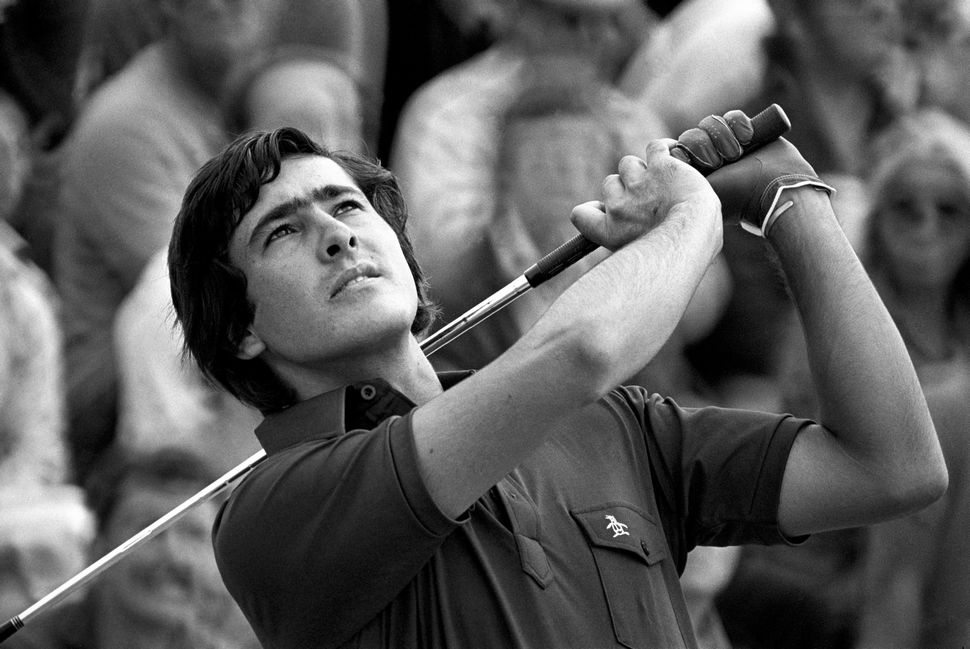Forty years ago Seve Ballesteros won The Masters for the second time, three years after his first triumph. He had just turned 26. Everyone agreed the course at Augusta National was made for him. More were sure to follow. But he never won it again. How did that happen?
It happened like this. Other than in 1984, when he missed the cut, and 1988, when he finished seven shots behind Sandy Lyle, Seve might have claimed four more Green Jackets before the end of that decade, beginning with 1985, when he entered the final round level with Bernhard Langer, playing just ahead of the leader, Curtis Strange. But Strange hit in the water on 13 and 15 and Seve was right in it, playing with a man who six months before had described him as being “very intimidating”. Ballesteros had won four majors at this point; Langer none. But Seve’s birdie putts and chips kept failing to drop and when Langer made three at 17, it was all over. As they walked to the 18th tee, Seve patted the German on the back and said: “Well done. This is your week. It’s all yours.” Uncharacteristically magnanimous, perhaps, but for sure the Spaniard would have been optimistic about his Masters future.
The following April, his Masters preparations were far from ideal: he had played just nine competitive rounds all year and his heart and mind were in turmoil following the recent death of his father. You would not have known it when Ballesteros had just four holes to play on Sunday – he led the tournament by two shots. After a perfect drive he only had a mid-iron into the green on the par-five. But he had to wait for five minutes before hitting it, within which time Jack Nicklaus birdied the 16th to cut Seve’s lead to one. When it was time to play, he hit the worst shot of his life: a feeble 4-iron that wasn’t close to making the carry over the pond. He made a bogey; he was now tied with Nicklaus on eight under par. But not for long. Jack birdied the 17th. The circumstances, not least trying to defy a 46-year-old golfing god and the public who so wanted him to win, became too much. Seve also bogeyed the 17th and finished fourth, two shots behind the Golden Bear. “I think that if I had hit the green instead of the water, I would have won maybe six Masters,” he reflected some time later. It is a thought which, sadly, he will have taken with him to the grave in 2011.
Moving on another 12 months, Seve was this time still in the hunt after 72 holes. He was in a three-man playoff with Greg Norman, another of the game’s contemporary giants who was the reigning Open champion, and Larry Mize, an unheralded 28-year-old American tour pro who happened to have been born in Augusta. The cognoscenti were obviously pretty sure that the destiny of the title lay between Ballesteros and Norman. As you will know, they were wrong. Seve bowed out first, three-putting on the first extra hole (the 10th). As he made the forlorn walk back up the fairway to the clubhouse, the tears flowing freely, Mize and Norman played the 11th hole, where Mize prevailed by holing a preposterous chip shot from about 45 yards. He would never win another major. Norman would win one more Open. So would Seve, in 1988…
…which meant that in April 1989 he returned to Augusta as the holder of a major championship. This time the final round fell on his birthday, April 9. In fact, due to shocking weather the previous afternoon, the third round was also concluded that day. Seve played the five holes he had been left to finish in three under par. He began his fourth round with a birdie, holed a bunker shot at the 2nd, holed from 40 feet on the 4th and 30 feet on the 5th. He birdied the 9th. He was out in 31. He led The Masters. A level-par 36 coming home would have got him into another playoff. He shot 38, not making a birdie until the last, when it was too late. Soon afterwards, Scott Hoch missed a short putt on the first playoff hole and then Nick Faldo made a substantially longer one at the next to win.

Related: The Green Jacket – 16 key facts about golf’s ultimate prize
Faldo retained his crown in 1990, with Ballesteros eight shots back in a tie for seventh. It would be his last top-10 finish at Augusta. When it was all over, he had enjoyed eight top-10s at The Masters, two of them wins. In the Open Championship, he had seven top-10s, with three of those being victories. As I have briefly outlined above, Seve was seriously unfortunate that he did not also make it to three Masters titles. At least three.
You can follow Robert Green on Twitter @robrtgreen and enjoy his other blog f-factors.com plus you can read more by him on golf at robertgreengolf.com
